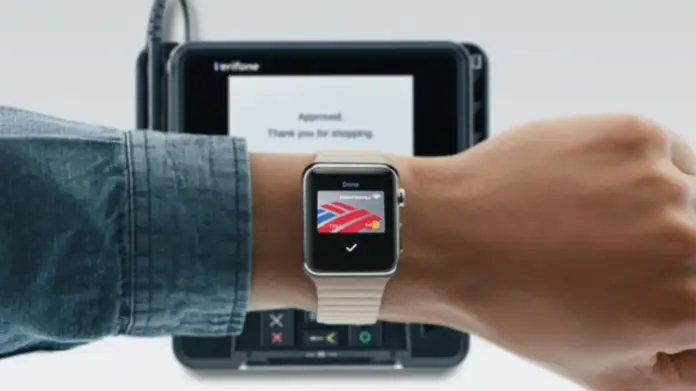Wearables are predicted to reach $20.64 billion by the end of 2022. not just in banking and payments, but also in healthcare, retail, and telecom. The demand for wearables in the pandemic era was pushed by shifting consumer interests and fintech developments. The technology and accessories we employ to make contactless payments are known as wearable payment devices. The most popular designs include rings, belts, coats, fitness trackers, and smartwatches. To link the gadget with the customer’s bank account, they employ systems like Apple Pay, Samsung Pay, and Google Pay.
Watch Apple
One of the most well-known smartwatches on the market is the Apple Watch, which has NFC (Near Field Communication) technology. This technology enables the watch to exchange data, do mobile payments, and conduct other contactless transactions with other NFC-capable devices, such as smartphones.
Jawbone UP4 Activity Monitor
By collaborating with American Express, the fitness tracker Jawbone UP4 offers contactless payment functionality. The most recent smartwatch from Jawbone is the water-resistant UP4. Therefore, you need not be concerned about it getting wet.
Ringly
Ringly sells jewelry such as rings and bracelets that use Bluetooth to connect to your phone. Along with tracking your actions, they enable contactless payments through their partnership with MasterCard. They let you to wave your hand to conduct contactless payments.
To use wearable payment a user must connect a wearable payment device, such as a smartwatch, to a credit card or bank account in order to use it. By just tapping the connected device against a payment terminal, the user can make purchases. The associated bank account or credit card are used to process the payment at that point.
Analysis
Wearable technology, which includes devices like smartwatches, fitness trackers, and smart eyewear, is gradually changing the face of several businesses, including banking. Wearables add an extra layer of convenience and immediate access to banking. Customers no longer need to pull out their smartphones or laptops to do a variety of banking tasks; a mere glance at their wrist or a voice command can do the job. Wearable technology simplifies financial activities, allowing everything from monitoring account balances to making contactless payments. In addition, wearable technologies offer the possibility of a better level of security because they frequently include biometric features like heart rate tracking or fingerprint and retina scanning. These biometric verifications can work as a second layer of authentication, guaranteeing the security of financial transactions. Worries about data privacy and the potential hackability of these devices are raised by the integration of banking into wearables, though. Banks will also need to make significant infrastructure investments to handle these interactions smoothly. Overall, as wearable technology spreads and advances, it offers the potential to improve banking’s usability and integration into consumers’ daily lives. However, this progress also calls for close monitoring of security and data protection.
“Rise of Wearables in Payments and Banking.” M2P Fintech Blog, m2pfintech.com/blog/rise-of-wearables-in-payments-and-banking/#:~:text=Wearable%20payment%20systems%20are%20quite,enable%20payments%20and%20cash%20transfers. Accessed 1 Sept. 2023.




